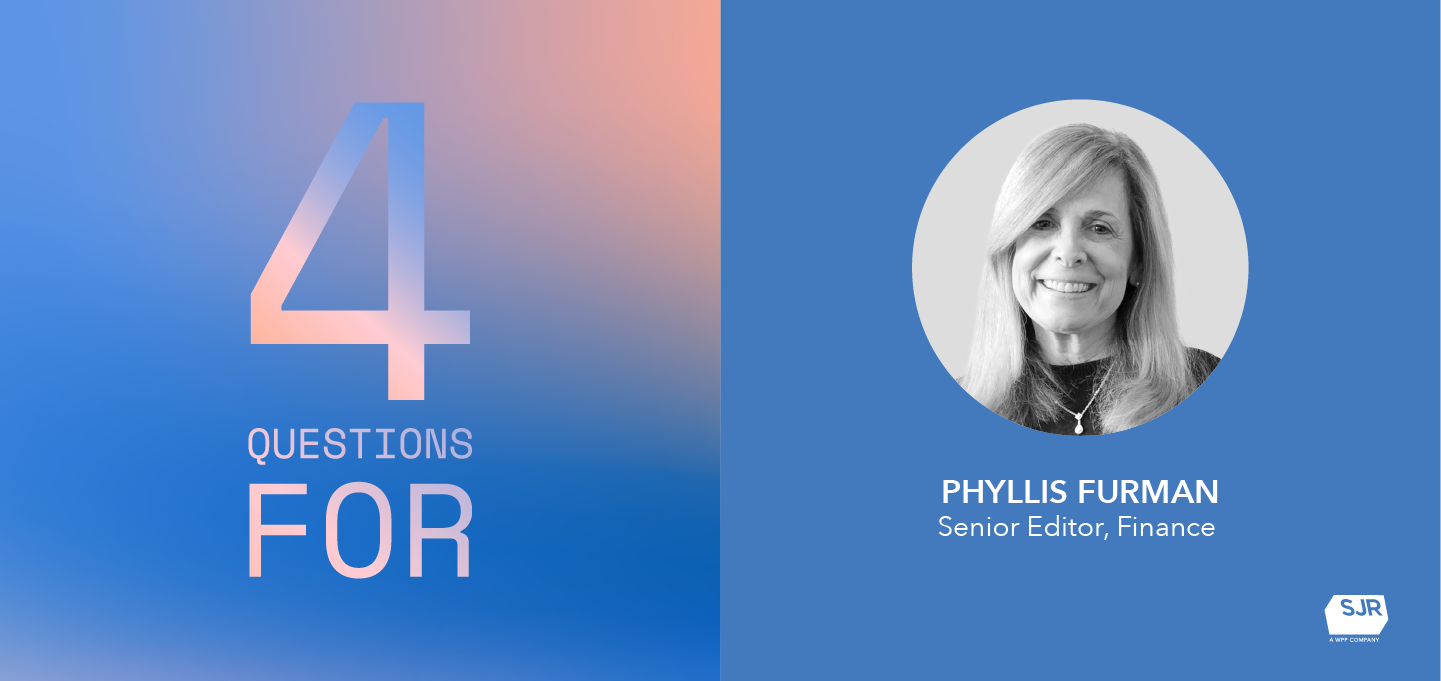|
|
Can you tell me a bit about your pre-SJR life as a financial journalist here in NYC?
As a business journalist, I covered multiple beats, including law and accounting, media, and personal finance. Over the years I broke many stories and specialized in writing in-depth investigative reports. I’m a two-time winner of the Gerald Loeb Award, financial journalism’s highest award.
In 2015, I won the Malcolm S. Forbes Public Awareness Award for Excellence in Advancing Financial Understanding for my reporting on personal finance for the New York Daily News. One thing I’m very proud of is a series I started called The Money Makeover. We paired Daily News readers with financial advisors who provided them with a financial roadmap. The series caught fire because we put a human face to finance and offered valuable lessons.
What have been some of your favorite assignments working for financial clients during your years here at SJR?
We launched an investor education website for FINRA (Financial Industry Regulatory Authority) called The Alert Investor. Our mission was to help the public become smarter about saving and investing, and to demystify finance. We covered everything from bonds to stock buybacks to annuities. We brought a journalistic eye to the content, and we had fun with it, too. One of my favorite pieces was “4 Movies That Got Wall Street Wrong.” Other media outlets regularly republished our work.
One of the most exciting interviews that I’ve done at SJR was with David Ruder, the former chairman of the SEC (Securities and Exchange Commission). Mr. Ruder served during Black Monday—Oct. 19, 1987—the day the Dow plummeted 22.6%, the largest one-day percentage drop in Dow history. It was fascinating to hear him share his memories of the panic that overtook investors that day and the steps officials took to calm the market.
How do you approach B2B vs. B2C content?
Regardless of the audience, to create great financial content you need to find an angle, gather compelling facts, and tell a story. And you need to take a creative approach, whether the topic is IRAs or LBOs.
That being said—everyday consumers of financial products are very different from institutional investors and corporations. One of the great advantages of working with an agency like SJR is that we understand both these audiences very well. We know how to tailor our content and choose the right vehicles for that content. As former journalists, we’re able to master any financial subject and speak with a level of sophistication and clarity that helps our clients build trust with their customers.
What topics and formats do you think are on the horizon for financial content?
Socially responsible investing is growing exponentially—globally, the impact investing market is now valued at more $1 trillion. There will be a lot of opportunity to focus on the new ways financial services firms are trying to solve the world’s problems.
As for formats, not that long ago you would never think of a financial institution on TikTok. Now you’re starting to see it more and more as banks and financial services companies target Gen Z. One popular TikTok video from Fidelity explains what fractional shares are by comparing them to a piece of pie. So, as a financial services marketer, you could write a boring explainer about fractional shares, or you could create a fun TikTok video with a piece of pie. I think the pie wins.









